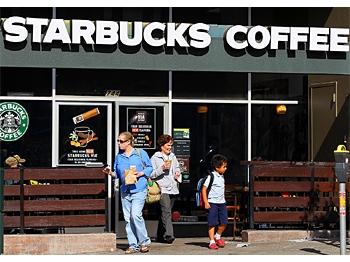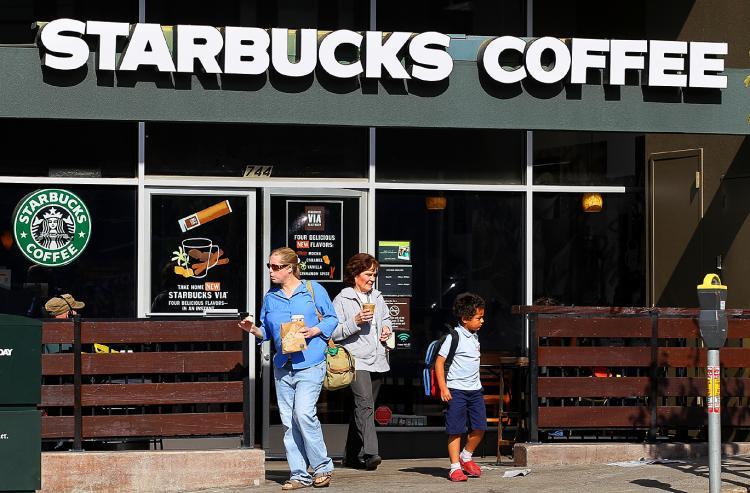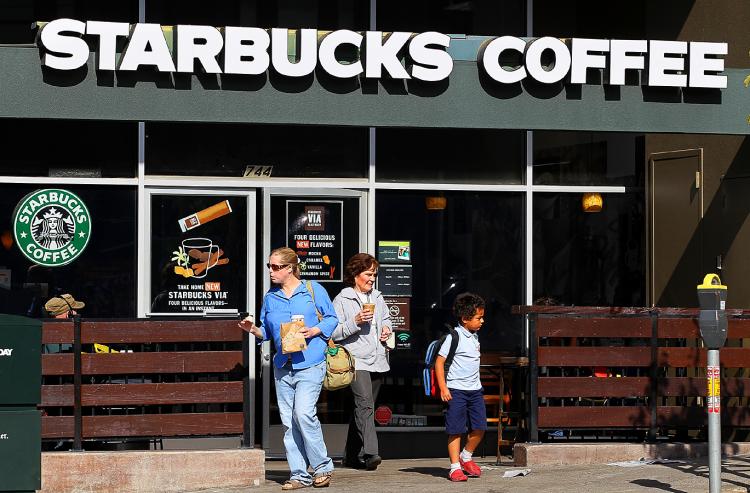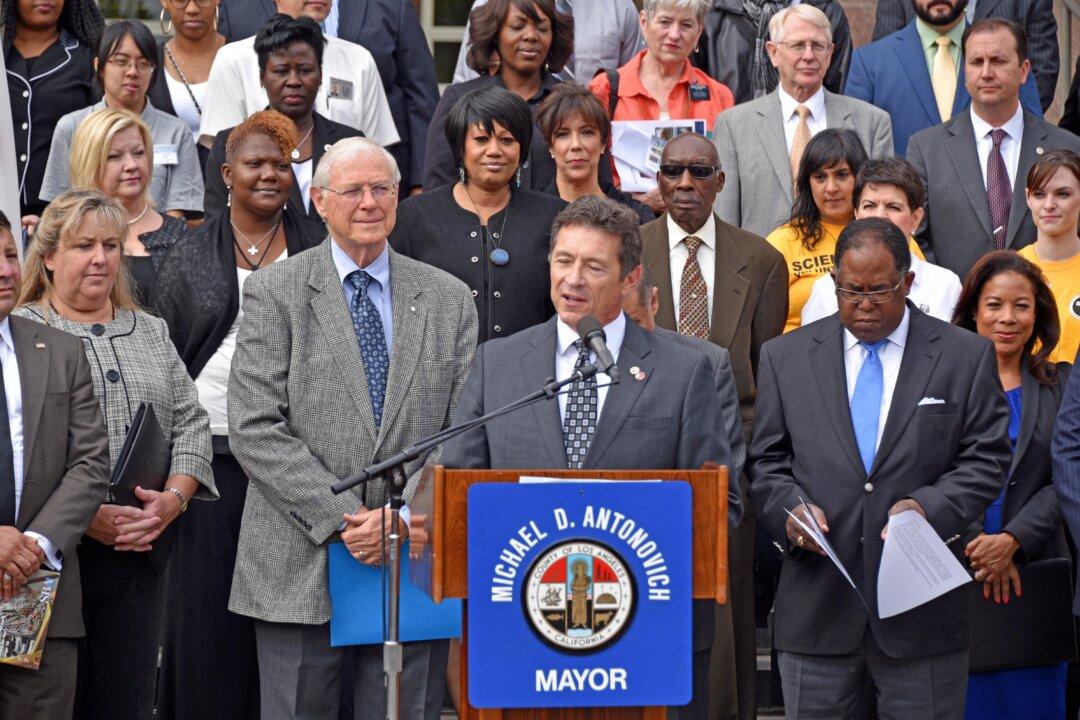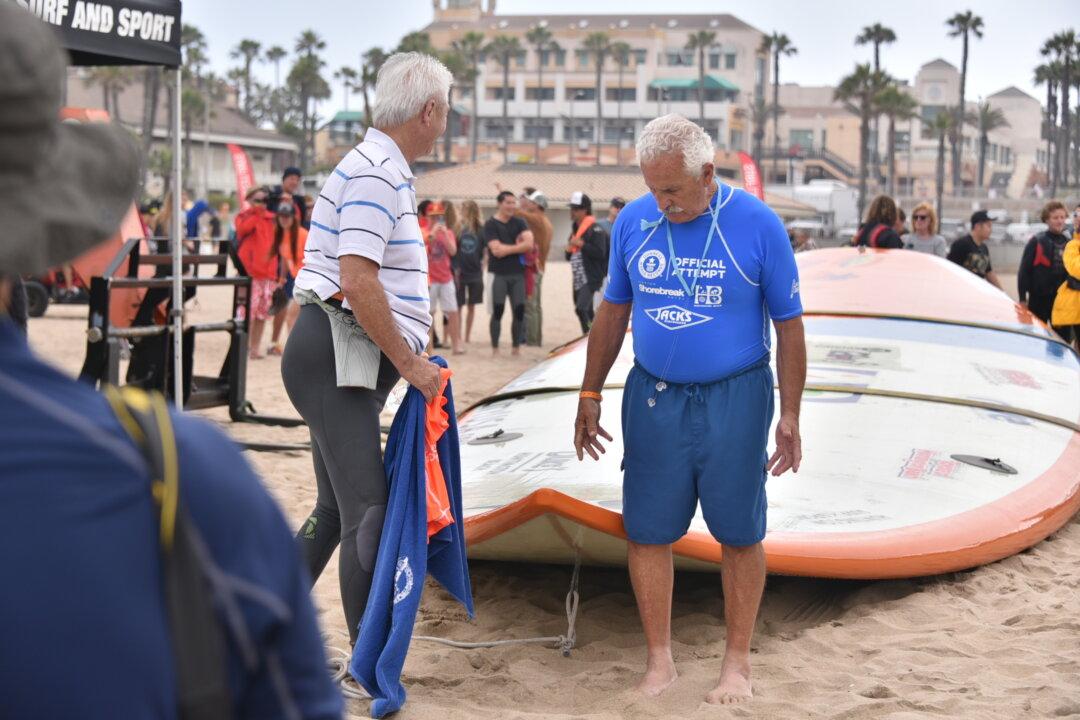BRENTWOOD, Calif.—A few days ago, I found myself at a Starbucks store during an open house celebrating the building’s renovation. I was truly amazed.
The first thing I saw was a counter top, without an edge. It was actually a piece of three inch thick slab lumber unsawn along the edge without the bark. It is a beautiful application of nature, especially since the lumber came from wind-felled Florida trees. The eco-improvements are rustic, but flow seamlessly into the building’s social environment.
After placing an order and meandering along the counter, I overheard what appeared to be a manager or corporate promoter describing some of the ‘nuances’ of the eco-improvements. There is recycled black steel “cabinetry,” innovatively covering the wall as one enters the store. It actually fell into the background visually, because of the various colored products tucked into the checkerboard-like structure.
As I relaxed at a table, I noticed a flier regarding the eco-renovation open house. Starbucks has obviously taken their eco-commitment very seriously. Thirteen areas of eco-improvements were listed with their corresponding numbers dotting a floor plan of the store so anyone could locate the new improvements.
I decided to join about two-thirds of the patrons by opening my laptop. No, not Facebook, but I was going to see what the Starbucks website had about their eco-renovation. The opening webpage did strike me: “BUILDING RIGHT … NATURALLY” over a background photo of contractors renovating a building.
The following statement is engaging:
“We share our customers’ commitment to the environment
And we believe in the importance of caring for our planet working with and encouraging others to do the same. As a company that relies on an agricultural product, it makes good business sense. And as people living in the world, it is simply the right thing to do.”
I stopped for a moment musing what my commitment was to the environment…
What’s yours?
Five key areas makeup Starbuck’s commitment. The depth of that commitment is substantial, since it is not limited to renovation alone, but to their entire operation and beyond.
Below is the quick list from their website with short descriptions:
Recycling
It’s a big challenge and we’re making big progress. We’re trying to develop more environmentally friendly cups and are working hard to expand our recycling program in an effort to reduce the waste we create.
Energy
We are proud of the work we have done to be more energy efficient and we’re committed to further minimizing our energy consumption and using renewable sources of energy to lower our impact on the planet.
Water
We all have to work carefully with one of our most valuable natural resources and we’re evaluating our store design, equipment and operations to identify ways to continue to reduce the amount of water we use.
Green Building
We’re making our stores as green as we can by using responsible building materials and energy efficient designs to reduce our environmental footprint.
Climate Change
Climate change poses a serious threat to the world’s coffee-growing regions and we’re aggressively pursuing strategies to address this problem and help farmers mitigate the impact.
Starbucks’ list of relationships with internationally recognized NGOs and other nonprofits is a who’s who of responsible contributors to sustainable needs for life on our planet. They have also worked hard to provide some of the best product lines in the business!
Don’t forget your cup of Joe!
Disclaimer: No, I don’t own any Starbucks stock—yet.
For more information on Starbucks Responsibility Ethical Local Global see: http://www.starbucks.com/responsibility
The first thing I saw was a counter top, without an edge. It was actually a piece of three inch thick slab lumber unsawn along the edge without the bark. It is a beautiful application of nature, especially since the lumber came from wind-felled Florida trees. The eco-improvements are rustic, but flow seamlessly into the building’s social environment.
After placing an order and meandering along the counter, I overheard what appeared to be a manager or corporate promoter describing some of the ‘nuances’ of the eco-improvements. There is recycled black steel “cabinetry,” innovatively covering the wall as one enters the store. It actually fell into the background visually, because of the various colored products tucked into the checkerboard-like structure.
As I relaxed at a table, I noticed a flier regarding the eco-renovation open house. Starbucks has obviously taken their eco-commitment very seriously. Thirteen areas of eco-improvements were listed with their corresponding numbers dotting a floor plan of the store so anyone could locate the new improvements.
I decided to join about two-thirds of the patrons by opening my laptop. No, not Facebook, but I was going to see what the Starbucks website had about their eco-renovation. The opening webpage did strike me: “BUILDING RIGHT … NATURALLY” over a background photo of contractors renovating a building.
The following statement is engaging:
“We share our customers’ commitment to the environment
And we believe in the importance of caring for our planet working with and encouraging others to do the same. As a company that relies on an agricultural product, it makes good business sense. And as people living in the world, it is simply the right thing to do.”
I stopped for a moment musing what my commitment was to the environment…
What’s yours?
Five key areas makeup Starbuck’s commitment. The depth of that commitment is substantial, since it is not limited to renovation alone, but to their entire operation and beyond.
Below is the quick list from their website with short descriptions:
Recycling
It’s a big challenge and we’re making big progress. We’re trying to develop more environmentally friendly cups and are working hard to expand our recycling program in an effort to reduce the waste we create.
Energy
We are proud of the work we have done to be more energy efficient and we’re committed to further minimizing our energy consumption and using renewable sources of energy to lower our impact on the planet.
Water
We all have to work carefully with one of our most valuable natural resources and we’re evaluating our store design, equipment and operations to identify ways to continue to reduce the amount of water we use.
Green Building
We’re making our stores as green as we can by using responsible building materials and energy efficient designs to reduce our environmental footprint.
Climate Change
Climate change poses a serious threat to the world’s coffee-growing regions and we’re aggressively pursuing strategies to address this problem and help farmers mitigate the impact.
Starbucks’ list of relationships with internationally recognized NGOs and other nonprofits is a who’s who of responsible contributors to sustainable needs for life on our planet. They have also worked hard to provide some of the best product lines in the business!
Don’t forget your cup of Joe!
Disclaimer: No, I don’t own any Starbucks stock—yet.
For more information on Starbucks Responsibility Ethical Local Global see: http://www.starbucks.com/responsibility

